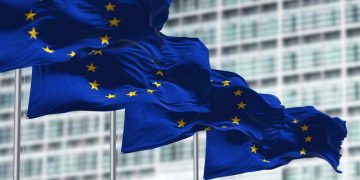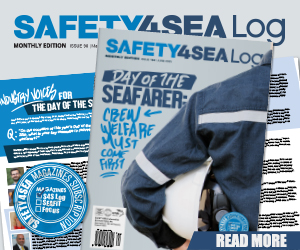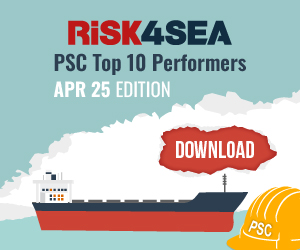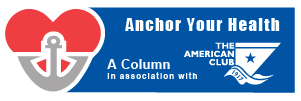While there has been some recent progress in the fight against shipping emissions, there are still serious challenges, relating to cost and lack of compliance with standards, noted Keith B. Letourneau, Partner Maritime, BLANKROME, at the 2022 GREEN4SEA Forum, warning that without mandatory reductions, GHG emissions from the maritime sector could increase between 50-250% by 2050.
The problem in numbers
Ships account for 2.5-3.5% of annual GHG missions, which equates to nearly 1 billion metric tons of CO2 annually. There are roughly 55,000 merchant ships trading internationally, but there are three classes of vessels that make up about 80% of shipping GHG emissions:
- bulk carriers at 440 million metric tons of CO2 annually
- oil tankers at 210 million and
- container ships at 140 million.
MARPOL Annex VI
Among others, MARPOL Annex VI includes Energy Efficiency Design Index (EEDI) for newbuild ships and soon to come into force the Energy Efficiency Standards for Existing Ships (EEXI). MARPOL’s approach is to seek a 40% reduction by 2030 when compared to 2008 levels and 50% by 2050.
…this 50% reduction by 2050 is still far short of the global net emissions by that same year that client climate scientists say is needed to avert increasing the average world temperature by no more than 1.5C in this century
…Mr. Letourneau stressed.
-EEDI
This is for newbuilt ships and estimates the grams of CO2 per tonne mile. It reflects energy efficiency in actual use and is a function of installed power vessel speed and cargo carried. EEDI is intended to ensure that new ships are designed to be energy efficient. Its current implementation calls for percentage reduction in GHG emissions from 0-20% depending upon vessel type for vessels constructed through December 31st, 2024, and during the next five-year cycle from 0-30%.
The good news is that, over time, new ships are gradually becoming more energy efficient and GHG emissions efficient. The bad news is that the standards are not sufficient to achieve the IMO’s stated goal of a 40% reduction by 2030 in GHG emissions when compared to 2008 levels and EEDI does not address the state of the existing fleet
…explained Mr. Letourneau.
-SEEMP
The ship energy efficiency management plan provides an approach for monitoring ship and fleet efficiency performance over time in 2021. The enhanced SEEMP regulation was adopted requiring all cargo ROPAX ferries -that is RoRo passenger ferries and cruise ships over 5,000 gross tons and trading internationally- to have an improved implementation plan on how to reach the required carbon intensity indicator (CII) from January 1st, 2023.
-EEXI
The Energy Efficiency Existing Ships Index applies to ships over 400 gross tons and estimates, again, grams of CO2 per tonne mile based upon ship characteristics and mathematical equations. MARPOL Annex VI regulations 23 and 25 enter into force on 1 November 2022. Starting in 2023 EEXI will apply to the world’s existing fleet of merchant ships, and it is expected that most of the older ships will not meet EEXI requirements. EEXI does not require any measurement or reporting of true CO2 emissions while the ship is in operation.
“So, questions remain, how do you enforce EEXI standards? For example, if a ship will only meet its EEXI requirements by slow steaming, how do you enforce that requirement? Is it feasible to retrofit existing ships with new technologies to meet the EEXI requirements? Is the payback time short enough? Which technologies will emerge as the most economical and efficient to reduce GHG emissions? How many ships will have to be scrapped? What will be the impact on tonnage capacity in various sectors of the maritime industry? What will be the impact on long-term charters, on freight rates, on decisions to sell vessels and to purchase new ones?
-CII
The Carbon Intensity Indicator under MARPOL Annex VI regulation 28 enters into force also on 1 November 2022. This index measures the actual CO2 emissions in ship operations and creates a vessel rating system of A through E, with A being the lowest and E being the highest GHG emissions. For all ships with a “D” rating for three consecutive years, or an “E” rating for a single year, a corrective action plan must be developed and approved as part of the vessel’s SEEMP. The CII is based on deadweight tonnage and not actual cargo carried, so arguably does not incentivize cargo optimization.
Permissible CII GHG emissions will gradually decline year after year. Vessels that cannot demonstrate compliance with EEXI and CII regulations may not be able to trade internationally
…he stressed.
IMO approach
In 6-10 June 2022, IMO will hold its MEPC 78 meeting, aiming to revise the IMO’s initial strategy and define its long-term GHG reduction measures to be finalized with an agreed target date. IMO is entering phase 2 of its assessment period from spring 2022 to spring 2023, assessing the feasibility of measures to reduce GHG emissions.
EU approach
As the IMO has not acted swiftly, the EU was prompted to act to slow the progress of GHG emissions. EU has taken a three-part approach:
#1 Monitoring reporting and verifying CO2 emissions which started on January 1st 2018 for ships over 5,000 gross tons
#2 they’re establishing GHG reduction targets for the maritime transport sector
#3 is including the maritime transport sector in the EU’s emissions trading system
The EU has the first major carbon market and remains the largest: It sets an absolute limit on GHG emissions by entities covered by the system. Maximum allowances are allocated to participants which can purchase or trade. If the allowances are insufficient to meet its needs to reduce carbon emissions to fall within its allowance, a participant can purchase further allowances that are traded on a secondary market. And the allowances are gradually reduced over time. The EU’s goal is “fit for 55” reduction in carbon emissions by 2030.
US approach
The US will join IMO’s efforts to achieve zero carbon emissions. The US Coast Guard has announced that it intends to propose regulations to implement energy efficiency measures in MARPOL Annex VI, Chapter 4, to reduce GHG emissions. It will apply to US flagships, as well as foreign flagships operating in US navigable waters or the EEC. The Coast Guard regulations will be designed to “fill the gaps in an existing framework” and its timetable to release those regulations is May of this year.
Progress and challenges
There has been some progress but there remain significant challenges in achieving maritime GHG reductions, Mr. Letourneau stressed. Among others, container carriers Maersk and Express Feeders have ordered the first green methane container ships, with Maersk having 12 ships on order and Express Feeders 16 on order. There are conservation measures that exist today, he continued, like slow steaming, weather routing, contra-rotating propellers and propulsion efficiency devices that can deliver greater fuel savings, although slow steaming needs regulation to ensure fleet operators don’t game the system by adding ships to the queue to make up for the lost cargo in time. Additionally, Amazon, Ikea and Unilever have announced that they will require all of their ocean cargo to be carried aboard ships powered by zero carbon fuels by 2040.
However, the cost of compliance with GHG reductions by the world’s merchant fleet will be considerable. There is no real path to retrofitting the existing fleet, there’s a lack of compliance standards and enforcement measures. No coordinated effort exists to facilitate the movement of vessels in or out of port. Maersk reported that the pandemic and delays encountered at ports actually caused its GHG emissions to rise in 2021. Maersk CEO of ocean and logistics, Vincent Clerc, advocates for a net zero emissions by 2050, a drop-dead date for building new compliant fossil fuel vessels and more punitive carbon tax to reduce the cost gap between green and carbon fuels. None of that has come to fruition yet.
Time is running out; we need a symphony of players to achieve the reductions climate scientists are telling us are necessary, we need the IMO to serve as composer and conductor to lead that symphony
…Mr. Letourneau concluded.
Above article is a transcript text of Mr. Letourneau presentation during 2022 GREEN4SEA Forum.
The views presented are only those of the author and do not necessarily reflect those of SAFETY4SEA and are for information sharing and discussion purposes only.






























































